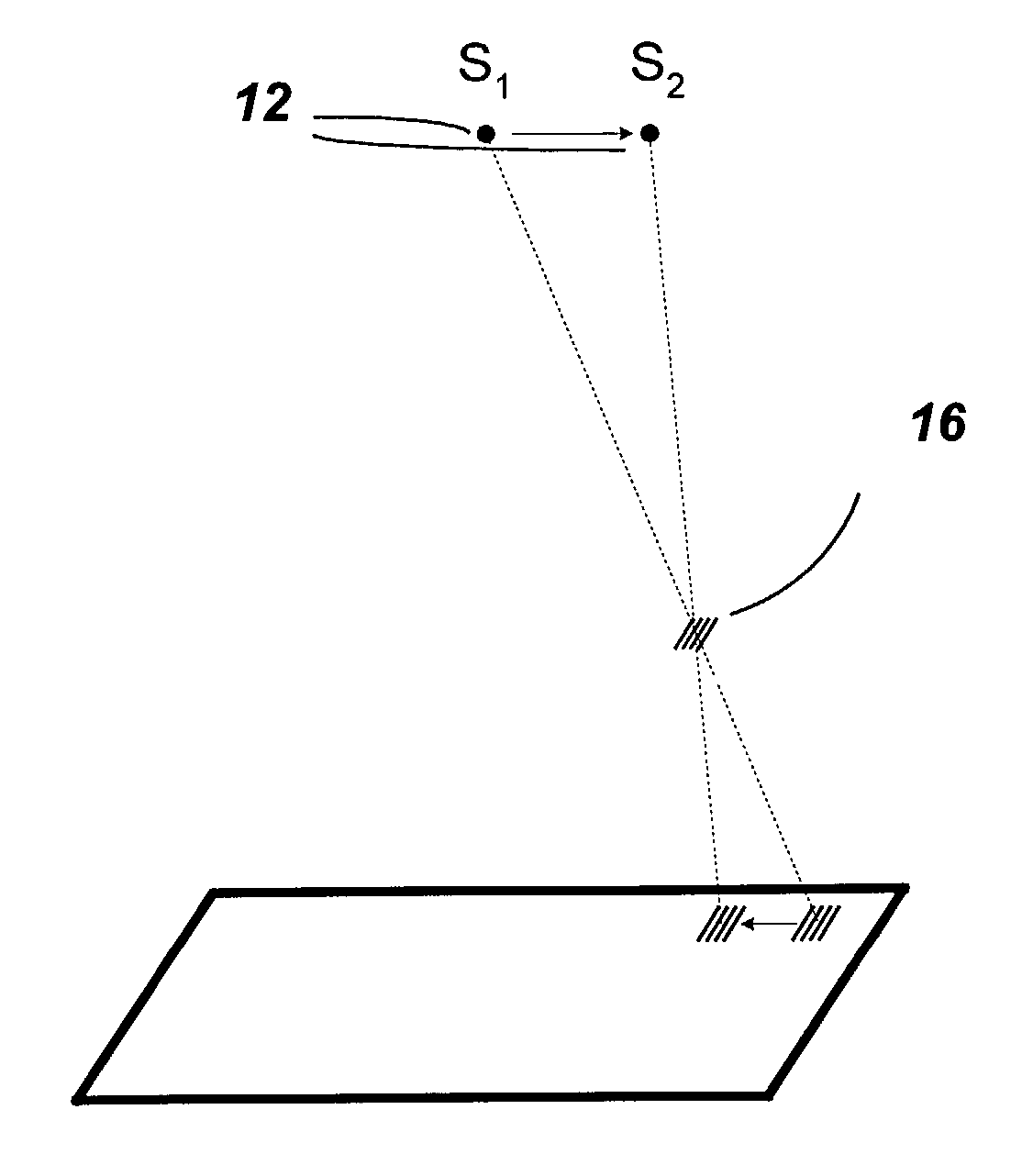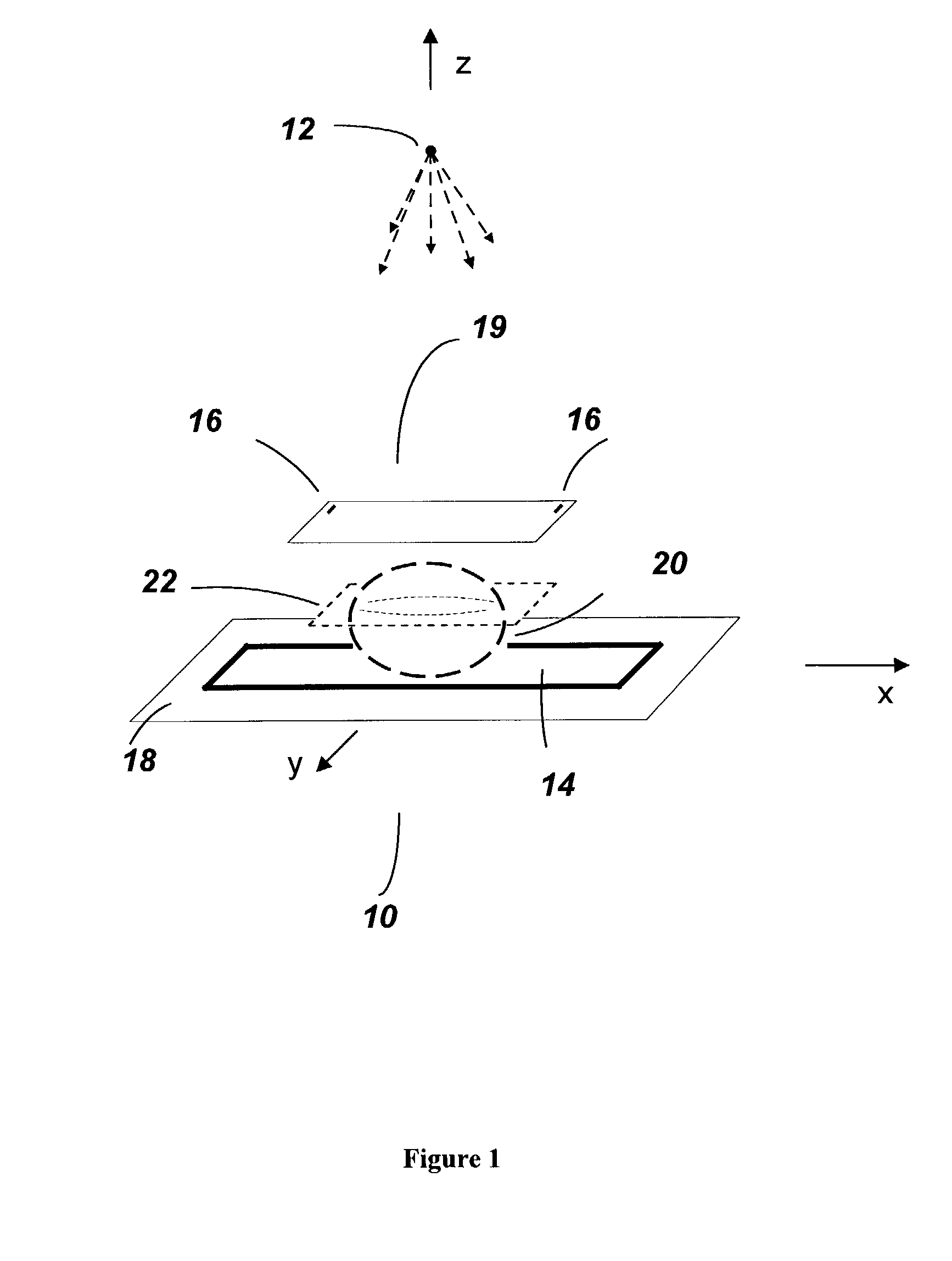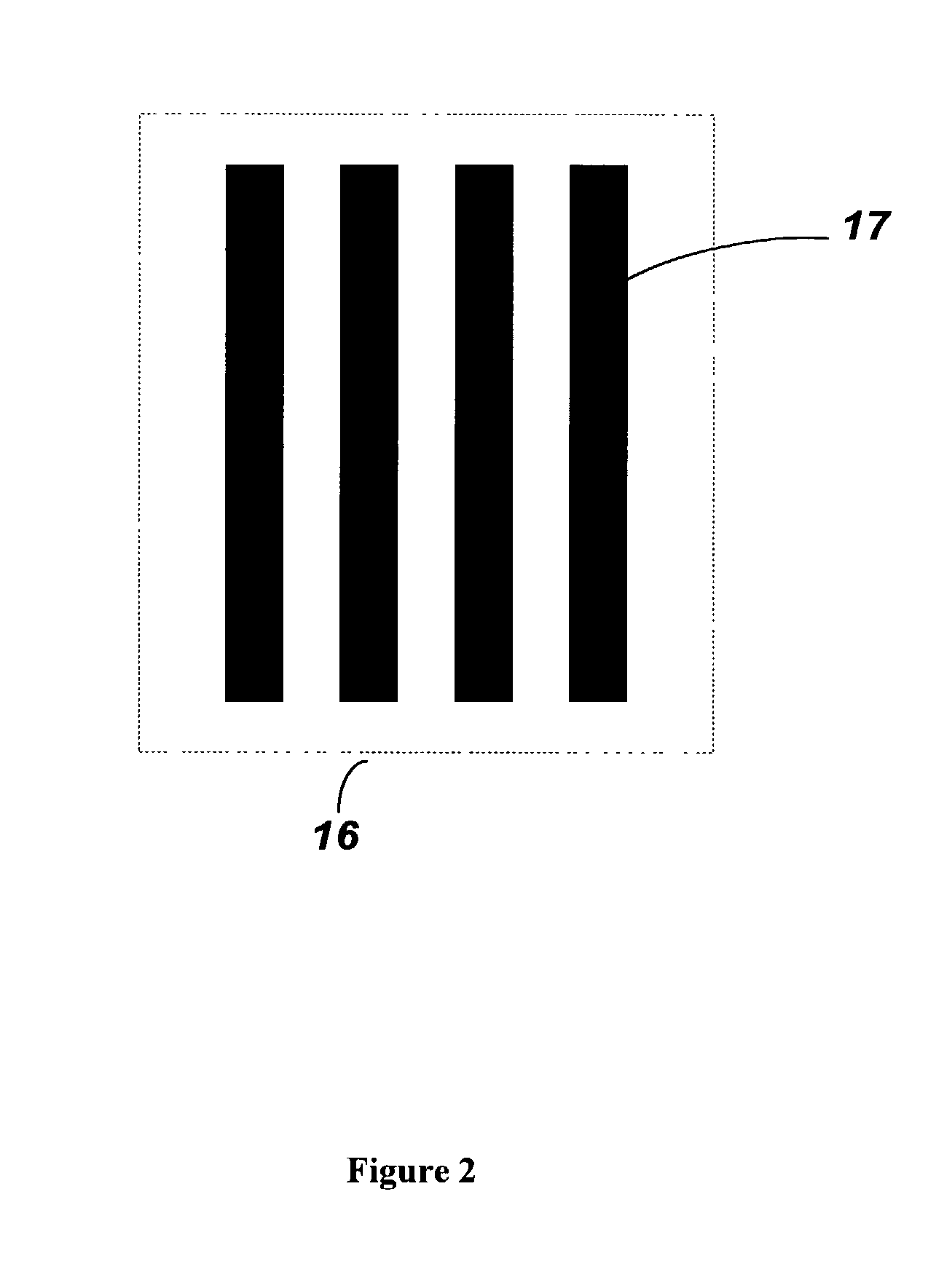Image positioning method and system for tomosynthesis in a digital X-ray radiography system
a radiography system and image positioning technology, applied in the field of tomosynthesis, can solve the problems of not having depth information, not knowing with great precision, and difficult to move the x-ray source to multiple positions with the requisite degree of precision, so as to improve the image quality of the resulting synthesized imag
- Summary
- Abstract
- Description
- Claims
- Application Information
AI Technical Summary
Benefits of technology
Problems solved by technology
Method used
Image
Examples
Embodiment Construction
[0024]The present invention features a method and system for aligning the two-dimensional image data in a digital tomosynthesis system. In the present invention, the shift required for each 2-D image used in digital tomosynthesis to synthesize or reconstruct a 3-D image is calculated, using the image of one or more markers having a specifically designed pattern.
[0025]FIG. 1 schematically illustrates a digital tomosynthesis system 10, constructed in accordance with one embodiment of the present invention. In overview, the system 10 includes a radiation source 12, a radiation detector system 14, and at least one marker 16 disposed between the radiation source 12 and the radiation detector system 14. Preferably, the radiation source is an x-ray source 12, and the radiation detector system is a planar digital x-ray detector system 14 lying in a detector plane 18. The x-ray source 12 generates x-rays that are transmitted through a target object 20 that is being imaged. The target object ...
PUM
| Property | Measurement | Unit |
|---|---|---|
| distance | aaaaa | aaaaa |
| phase shift | aaaaa | aaaaa |
| displacement | aaaaa | aaaaa |
Abstract
Description
Claims
Application Information
 Login to View More
Login to View More - R&D
- Intellectual Property
- Life Sciences
- Materials
- Tech Scout
- Unparalleled Data Quality
- Higher Quality Content
- 60% Fewer Hallucinations
Browse by: Latest US Patents, China's latest patents, Technical Efficacy Thesaurus, Application Domain, Technology Topic, Popular Technical Reports.
© 2025 PatSnap. All rights reserved.Legal|Privacy policy|Modern Slavery Act Transparency Statement|Sitemap|About US| Contact US: help@patsnap.com



